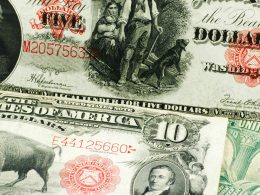by Regina Chi, AGF Management Ltd.
It’s no secret, globalization has peaked. You might even say it’s on life support.
And given that it is responsible for generating untold trillions in shareholder value over the past few decades while lifting hundreds of millions out of poverty, it’s little wonder so many bemoan the near future as capital retrenches around the world.
Yet it’s not all bad news for investors. In fact, there appears to be a silver lining as Asia’s emerging economies rush out their welcome mats, positioning themselves to reap the spoils of China’s woes—from ongoing trade wars and rising tariffs, to the swell of populism.
Countries like Vietnam, Thailand, Indonesia and India are now poised to become the next wave of winners as decades-old relationships are remapped, and new ones forged. However, investors looking for a long-term play would be wise to consider each country as its own asset class, each with its own economic policies and drivers of growth.
How did we get here?
While globalization has been underway since the birth of the telegraph and the Pacific railroad, it has waxed and waned over centuries. However, the most recent wave truly gained momentum following the North American Free Trade Agreement when U.S. car manufacturers out-sourced much of their labour to Mexico and later, with China’s admission to the World Trade Organization in 2001.
For decades, China built its economy as the world’s factory floor for cheap goods. However, over the past decade, China has been undergoing an astonishing transformation—from serving as an imitator, to a country focusing on moving up the value chain through technology advancements, thereby threatening the global order and the United States’ dominance.
This has created a domino effect in local, emerging markets—a shift that has already been well underway but is accelerating in the wake of ongoing trade wars as businesses seek to reorganize their manufacturing investments to avoid U.S. tariffs on Chinese exports.
Tomorrow’s emerging market players
Vietnam’s industrial parks have been quietly filling up as companies look to hedge against rising political uncertainty. One of the world’s fastest growing economies, Vietnam has recently opened its doors to the world and boosts several advantages over its Asian neighbours. Firstly, it is located next China, making for convenient shipping. Consider that it is also cheaper than Malaysia, more stable than the Philippines and Thailand and more accessible than Indonesia. What’s more, Vietnam’s factory workers earn about half of what workers earn in China’s big manufacturing zones. And with about 70% of its citizens under 35, and with more than one million joining the labour force every year, according to the World Bank, Vietnam has a steady flow of low-cost labour for the near future.
Meanwhile, some see the global trade wars as a second chance forIndia to realize its growth potential, based on its scale in terms of power generation, structural availability, favourable demographics and the spate of new reforms announced in recent months. While the country’s current economic woes have been widely telegraphed, the Indian government is implementing a number of stimulus measures designed to jolt the moribund economy while attracting new foreign investment.
The government recently announced steps to liberalize foreign direct investments regulations in manufacturing and retail sourcing, lowering the tax rate of 17% and now allowing 100% direct foreign investment in contract manufacturing in the auto sector—an important move that will help India establish more integrated supply chains based in the country.
Indonesia and Thailand are also poised to benefit from moves out of China. Indonesia is well-equipped to undertake some of China’s manufacturing capacity with a workforce comprised of 260 million under the age of 21, World Bank figures show. The government recently announced it will open up new sectors of the economy to foreign investment and introduce labour reforms by year’s end. One Taiwanese-based electronics manufacturing company already had a subsidiary in Thailand before the U.S-China trade spat deepened. It now plans to continue to build capacity in Thailand, as well as grow a footprint in India.
And it isn’t the only company with a head start in uprooting from China. Another Taiwanese-based company, a textile manufacturer working with big sporting and lifestyle companies, already has much of its garment capacity in Vietnam and has plans to build new fabric plants in Indonesia. Meanwhile, one of South Korea’s largest electronic companies has already pulled production out of China altogether, and is also likely to gain market share from the fallout from the U.S. government’s trade ban on companies like Huawei Technologies Co., Ltd.
Regina Chi a vice president and portfolio manager at AGF Investments Inc. She is a regular contributor to AGF Perspectives.
*****
The commentaries contained herein are provided as a general source of information based on information available as of October 9, 2019 and should not be considered as investment advice or an offer or solicitations to buy and/or sell securities. Every effort has been made to ensure accuracy in these commentaries at the time of publication however, accuracy cannot be guaranteed. Investors are expected to obtain professional investment advice.
The views expressed in this blog are those of the author and do not necessarily represent the opinions of AGF, its subsidiaries or any of its affiliated companies, funds or investment strategies.
AGF Management Limited (“AGF”), a Canadian reporting issuer, is an independent firm composed of wholly owned globally diverse asset management firms. AGF’s investment management subsidiaries include AGF Investments Inc. (“AGFI”), AGF Investments America Inc. (“AGFA”), Highstreet Asset Management Inc. (“Highstreet”), AGF Investments LLC (formerly FFCM LLC) (“AGFUS”), AGF International Advisors Company Limited (“AGFIA”), AGF Asset Management (Asia) Limited (“AGF AM Asia”), Doherty & Associates Ltd. (“Doherty”) and Cypress Capital Management Ltd. (“CCM”). AGFI, Highstreet, Doherty and Cypress are registered as portfolio managers across various Canadian securities commissions, in addition to other Canadian registrations. AGFA and AGFUS are U.S. registered investment advisers. AGFIA is regulated by the Central Bank of Ireland and registered with the Australian Securities & Investments Commission. AGF AM Asia is registered as a portfolio manager in Singapore. AGF investment management subsidiaries manage a variety of mandates composed of equity, fixed income and balanced assets.
™ The ‘AGF’ logo is a trademark of AGF Management Limited and used under licence.
About AGF Management Limited
Founded in 1957, AGF Management Limited (AGF) is an independent and globally diverse asset management firm. AGF brings a disciplined approach to delivering excellence in investment management through its fundamental, quantitative, alternative and high-net-worth businesses focused on providing an exceptional client experience. AGF’s suite of investment solutions extends globally to a wide range of clients, from financial advisors and individual investors to institutional investors including pension plans, corporate plans, sovereign wealth funds and endowments and foundations.
For further information, please visit AGF.com.
© 2019 AGF Management Limited. All rights reserved.
This post was first published at the AGF Perspectives Blog.














